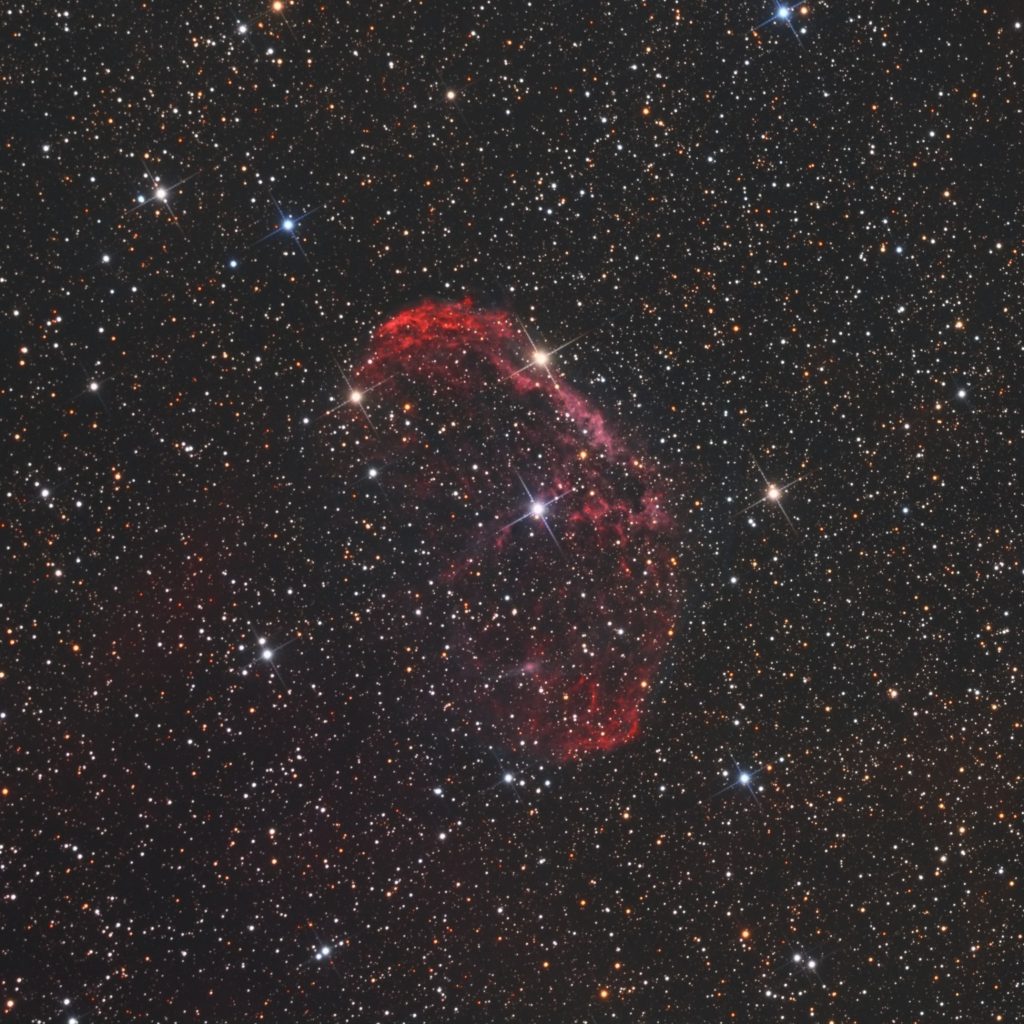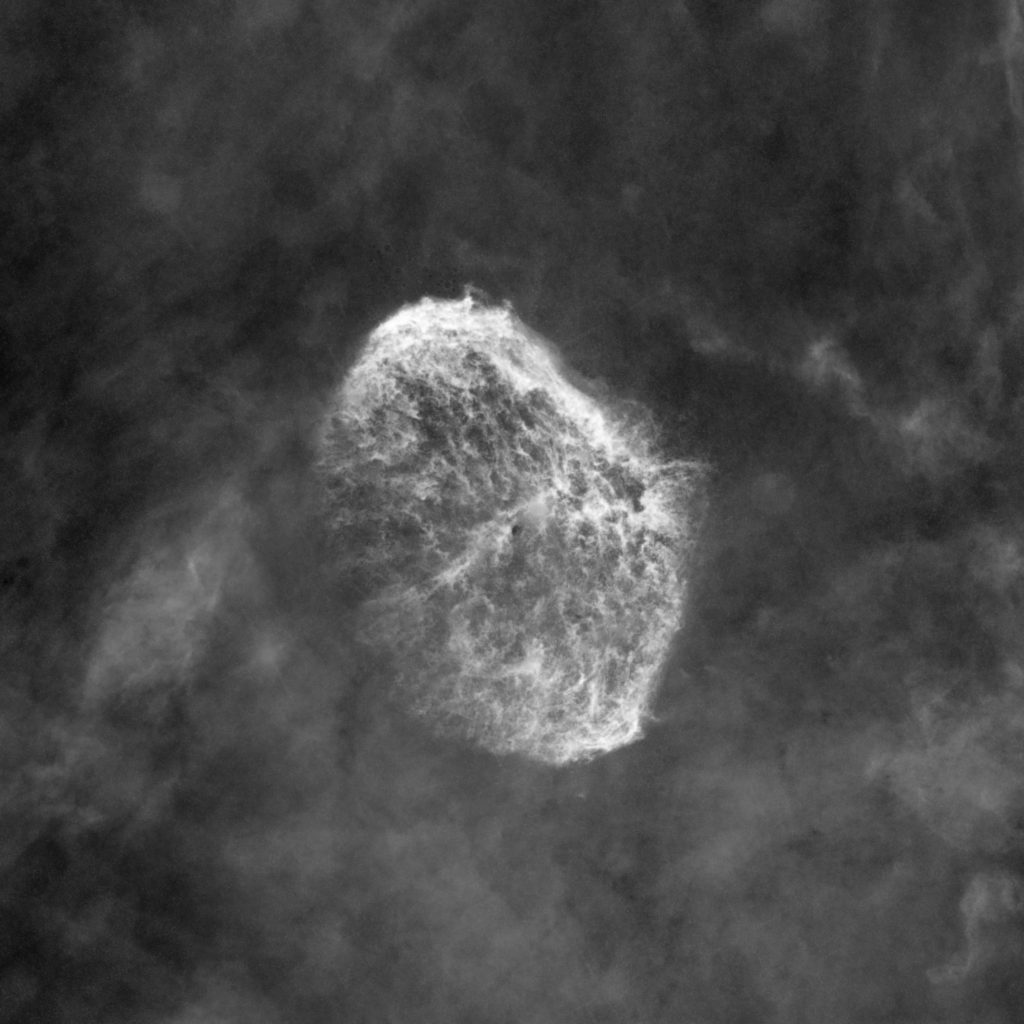The Crescent Nebula is a famous emission nebula located in the constellation of Cygnus in the Milky Way region. It is about 5,000 light-years from Earth.
It contains hydrogen atoms (shade of red) and the shade of blue is made up of oxygen atoms that surround hydrogen. The diameter of this amazing gas bubble is about 25 light-years.
The central star of the object (Wolf-Rayet WR 136) is part of a group of very large massive stars, extremely hot. In the future, it could result in a spectacular supernova explosion.
The Crescent Nebula- (NGC6888)

| Telescope | ASA 10″ F/3.6 10N ASTROGRAPH OTA |
| Focal length | 900 mm |
| Mount | G53f |
| Imaging camera | Atik 460EX mono |
| Guiding cameras | Lodestar X2 -Autoguider |
| Guiding optics | ASA 10″- OAG |
| Focal reducers | ASA 3″ Wynne Corrector 0,85x |
| Constellations | Cygnus |
| Distance | 5000 light years |
| RA center | 20h 12′ 06″ |
| DEC center | +38°21′ 22″ |
| Location taken | Slovakia |
| Date taken | 10/2017 |
| Pixel scale | 1.04 arcsec/pixel |
| Filters | Astronomik Ha 6nm , Astrodon OIII 5nm, Astrodon RGB (star) |
| Exposure | 59 x 1200 sec.BIN1 Ha filter 73 x 1200sec.BIN1 OIII filter 21 x 300sec.BIN2 RGB filter (each) |
| Total exposure | 49 hours |
| Processing software | PixInsight, CCD Inspector |
Processing object The Crescent Nebula was captured using narrowband filters a Hydrogen-alpha H-α 6nm (656.3 nm), Oxygen OIII 5nm(500.7 nm), the stars were captured by RGB filters.
Here you see a few hours of individual images (Ha,OIII). Photos are only gently stretched (CurvesTransformation).
It is interesting to see these individual images without stars (Ha,OIII).You can see the RGB for comparison too. You can see the completion (Ha, OII, RGB) above.






